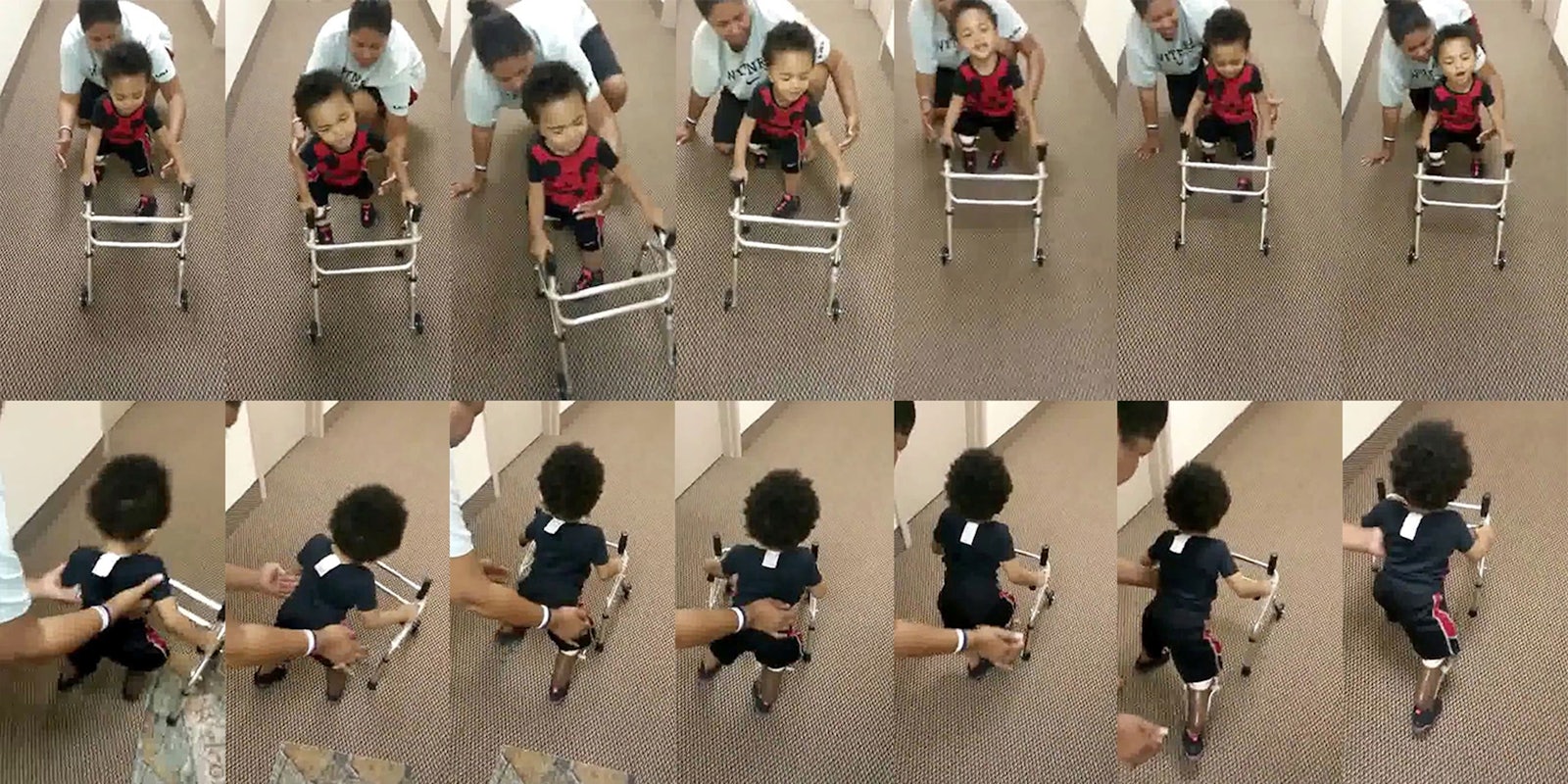“One, two,” says 2-year-old Kayden Elijah Kinckle as he steps forward. A few moments of unbalance earn an “Oh jeez,” but as he becomes more confident, he launches into, “I got it! I got it!”
Any toddler’s first steps are inspiring and adorable, but Kayden’s were especially wonderful to his parents. In this video’s description, his mother explains that Kayden is learning to walk with a walker and a prosthetic after his right foot and leg were amputated in January.
Kayden was born with a type of abdominal wall defect called an omphalocele, where organs including the intestines, liver, and the bladder stick outside of the belly button. An omphalocele happens when the muscles of the abdominal wall don’t close properly as the baby grows in the womb. It’s a very serious condition and is often accompanied by other birth defects.
Part of Kayden’s umbilical cord was wrapped around his legs and feet, which caused the physical abnormalities that led to his amputations. He has joined the approximately one in every 190 Americans living without a limb. Fortunately, he faces a wide variety of options for prostheses—though as Rose Eveleth writes in an article for NOVA Next, state-of-the-art prostheses might not be better than basic ones and are expensive. There are plenty of problems that prosthetic engineers can address.
The toddler’s “I got it!” is a great example of a strategy that psychologists call ‘self-talk.’ Think of the Little Engine that Could‘s motivating chant: “I think I can, I—think—I—can,” as the little railroad engine struggles up a big hill. Then, “I thought I could!” as it triumphantly coasts down.
Positive inner chatter can help runners win a race or psych up speakers before they go in front of a crowd. But researchers have also tried to listen in on the mundane self-talk we use everyday. “I realized that you could see somebody sitting in a chair or walking along the street and it may seem like nothing much is happening—but actually an incredible amount is happening,” says University of Manchester anthropologist Andrew Irving in a story by Ferris Jabr at Scientific American. “In their heads they may be going from childhood to religion to questioning God to trying to imagining what exists beyond death.” Irving’s work includes some fascinating videos of people walking through the streets of New York City and attempting to voice their inner thoughts.
Kayden’s parents are raising money to help pay for their child’s medical expenses on GoFundMe.com. They also hope to send him to a camp near Atlanta for children with prosthetics when he is old enough, reports WSB-TV. Next time you have a tough task to accomplish, try using the wisdom of a toddler and self-talk your way to success.
Screengrabs by Nikki Sessoms/YouTube | Remix by Jason Reed


